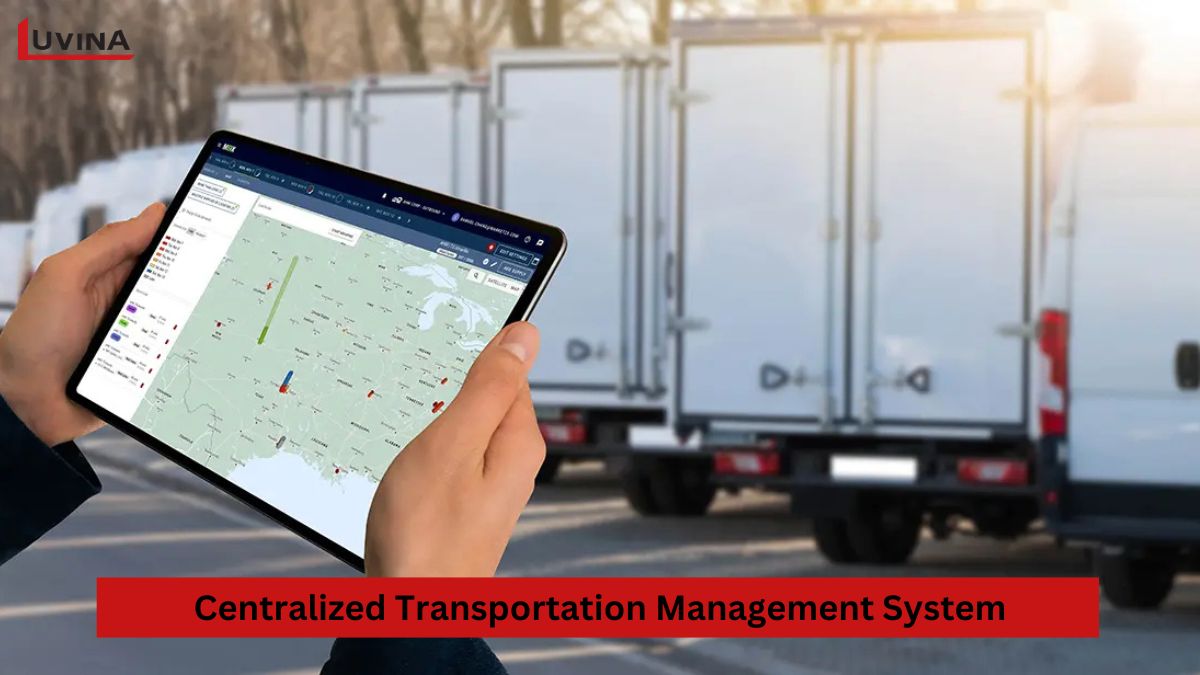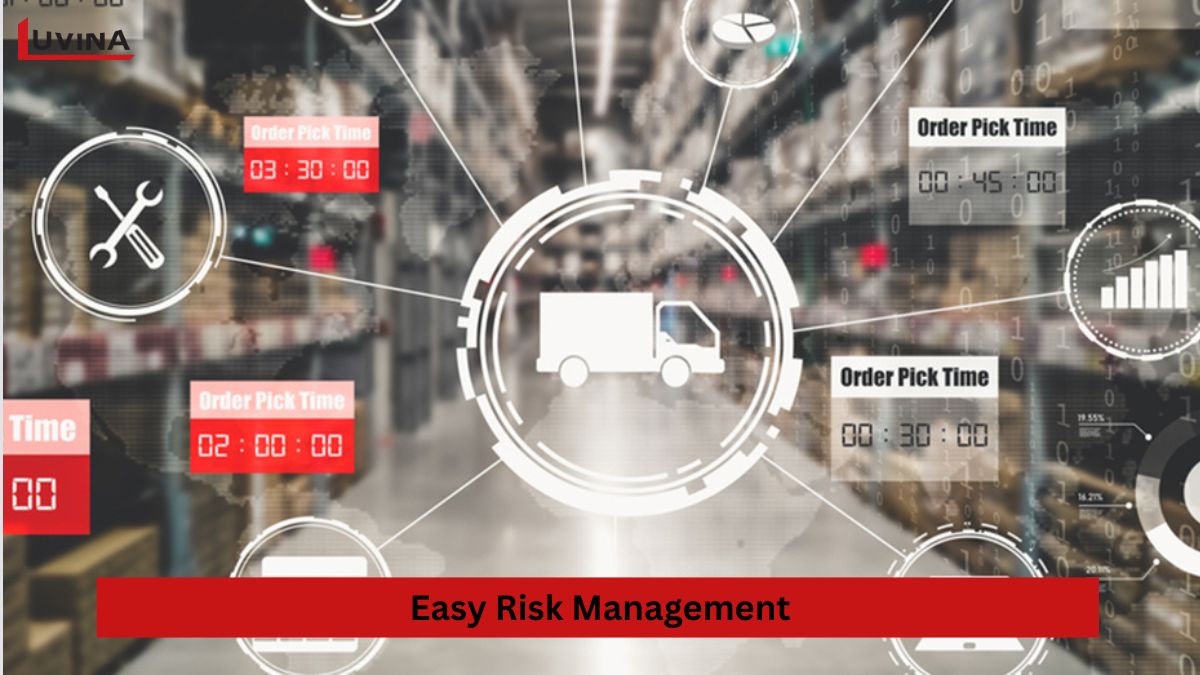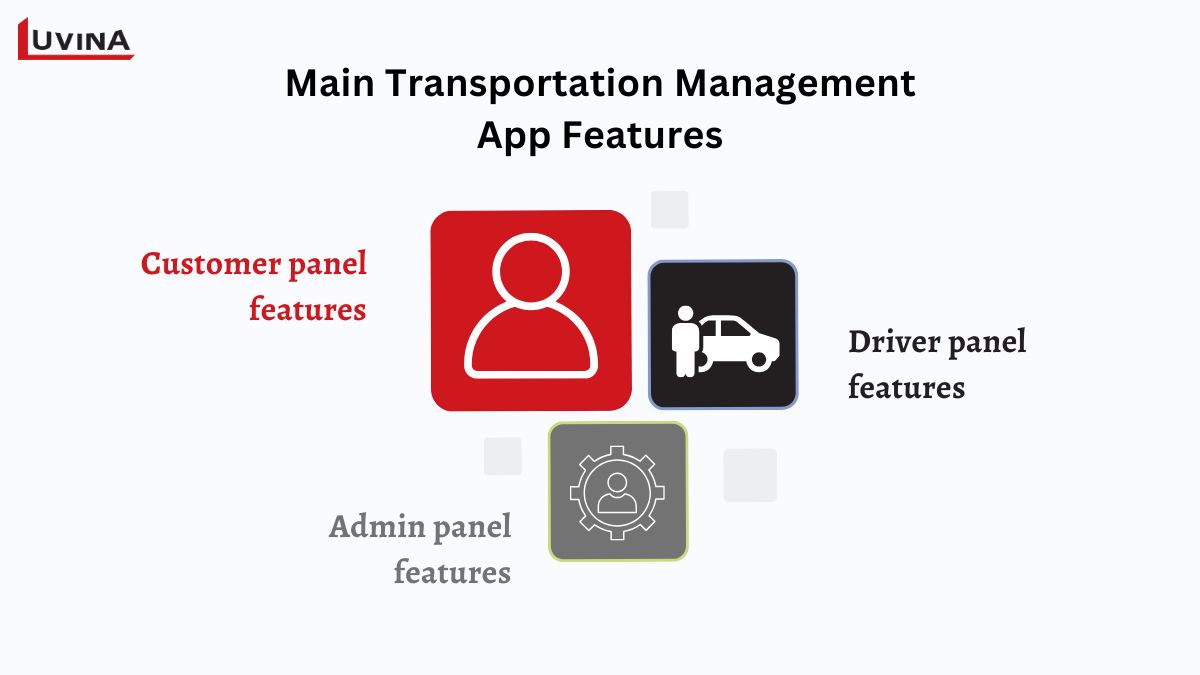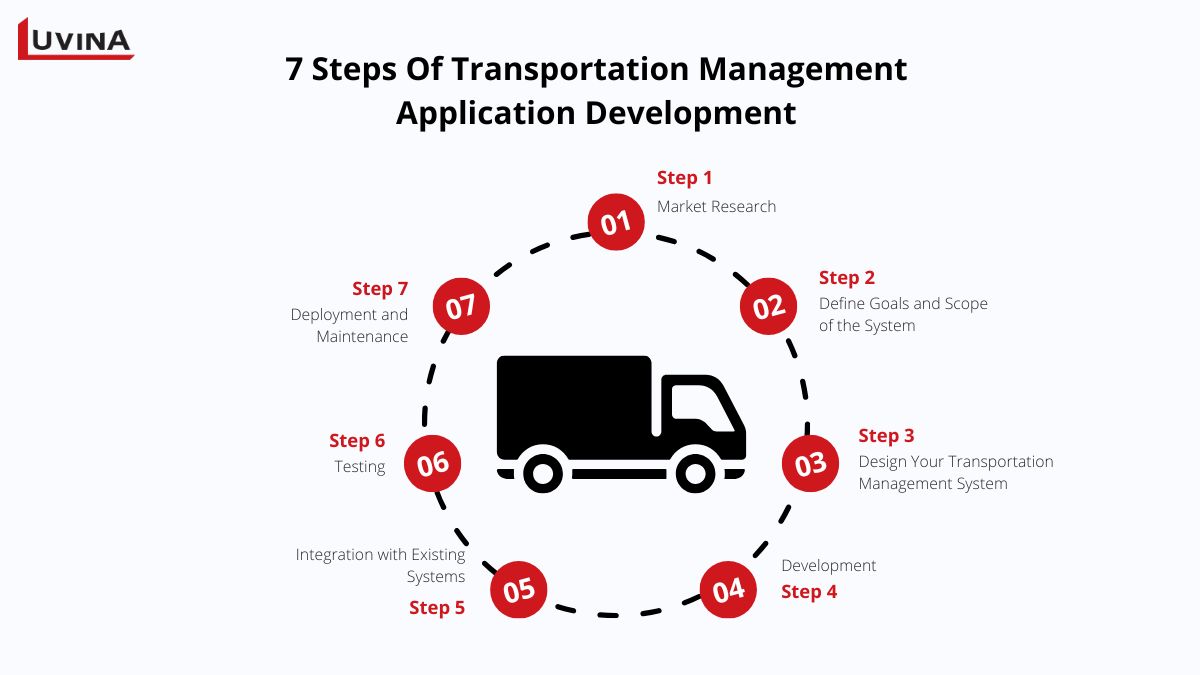Transportation management application development has now become a lifeline for many companies in the transportation business since the sector is under immense pressure caused by the pandemic. The need for transportation management software has increased gradually during the last few years, and the transportation management market is expected to reach $31.18 billion by 2030 while growing at a CAGR of 15.4%. In a nutshell, implementing transportation management systems can benefit businesses of any size by helping them adapt to the new dynamically changing face of the industry and more demanding customers.
In the article below, let’s discuss the advantages of transportation management software development and how developing a transportation management system can help businesses get ahead in the market in the article below.
What is a transportation management system (TMA)?
A transportation management system is a particular class of software application that helps a business manage its transportation activities better by giving consultation in planning, execution, and optimization of freight movement. These systems offer substantial benefits to transportation and supply chain stakeholders, such as shippers, manufacturers, e-commerce businesses, retailers, logistics managers, and supply chain managers.

As a comprehensive system, transportation management application development covers all aspects for a clear-cut simplification in the mobility of products right from their source to destination, starting with carrier selection and route planning to real-time tracking. Notably, some leading transportation management software can help logistics companies find the fastest routes and generate activity-tracking documents while ensuring compliance with trade regulations.
The transportation management system can easily integrate with various components, including order management, freight payment systems, and warehouse management, helping businesses improve logistics efficiency, reduce costs, and make more informed production decisions based on real-time data.
Benefits of transportation management software
Transportation management software development benefits almost all industries, mainly transportation and logistics. A well-implemented transportation management system helps organizations in mitigating unpredictable uncertainties of the future. Below are some major advantages of transportation management application development.
1. Enhanced Operational Efficiency
Transportation management system development automates most of the manual tasks and transportation operations at much more efficient levels. Besides, with the support of an automated system, paperwork is reduced, and only very minimal tasks related to manual data entry remain, freeing employees for more important and complex work.
Furthermore, with a TMS, business data becomes more visible, meaning businesses can make better-informed decisions based on real-time data. The TMS also acts like a single repository for storing data and communication documents that make data management easier, enhance business analytics, and consequently enable businesspersons to track performance with ease.
Automation also minimizes human errors. Much of the manual entry of data is avoided when there is a TMS. Real-time information provided by the system will enhance the accuracy of the data. Instead of using paper-based functions and manual processes, the system integrates various sources of data and automatically acquires the necessary data.
2. Cost Savings
Using transportation management software means that businesses are optimizing their transportation operations, which leads to significant cost savings. A survey by Arc Advisory Group found that businesses can save an average of 7% on transportation costs simply by implementing transportation management application development. By consolidating shipments, optimizing routes, choosing the most cost-effective carriers, and identifying and eliminating inefficiencies, a TMS helps businesses cut unnecessary costs.

3. Improved Customer Service
With real-time tracking, businesses can provide accurate and up-to-date information to customers about shipment status and estimated delivery times. This means that customers can resolve issues promptly in case of delays, reducing dissatisfaction. Additionally, transportation management software development helps businesses better meet customer needs, as machine learning tools within the TMS can predict customer demand based on historical and real-time data.
4. Route Optimization
Transportation management software optimizes routes and plans by considering delivery windows, transportation restrictions, carrier capacity, and real-time traffic conditions. This allows businesses to identify the most efficient delivery routes. As a result, businesses not only operate more productively but also save costs, with better visibility into operations. Companies can also connect their TMS with other companies to track logistics processes or integrate machine-to-machine communication and IoT to monitor their fleet.
5. Risk Management
Transportation management system development helps businesses comply with transportation regulations and industry standards. The system provides support for necessary document creation at the transport, customs, safety, and security protocol levels. Automation of these processes facilitates companies in avoiding penalties, ensuring regulatory compliance, and external factor-related disruptions such as natural disasters, political upheaval, and sudden surges in demand.

6. Enhanced Collaboration
A TMS acts as a centralized platform, allowing stakeholders in the supply chain to collaborate and communicate effectively. The system provides shared access to shipment information, delivery status, and documents. Stakeholders can exchange messages, share documents, and resolve issues. Additionally, the system includes features such as automated notifications and alerts to inform users about critical issues.
Main Transportation Management App Features
To meet the needs of end-users, a transportation management system or software must include several fundamental features. Below are some key functions that we believe should be present in any transportation management application.

1. Customer panel features
In a transportation management application, several control features are essential for customers, including push notifications and messaging. The push notification feature alerts customers about traffic conditions or incidents that might cause delivery delays. Messaging allows customers to easily communicate with drivers and address various issues. Additionally, some customers may need to book a vehicle or schedule a trip, so certain transportation management applications also include a vehicle booking feature.
2. Driver panel features
The next set of features that should be integrated into transportation management application development are those designed for drivers. Key features for drivers include maps, route guidance, and logs.
The map feature, integrated into the app, helps drivers choose the best delivery routes, avoid getting lost, or select more convenient paths. The log feature allows drivers to record daily activities, such as miles driven, deliveries made, hours worked, and more. This log feature not only helps drivers manage their work more effectively but also enables transportation companies to monitor driver activity daily.
3. Admin panel features
The final but equally important set of features in transportation management software development is the administrative dashboard, which includes tools like GPS tracking, offline support, admin panel, trip reporting, complaint management, and data analysis.
GPS tracking benefits administrators, drivers, and customers by allowing real-time monitoring of driver locations and shipment tracking from the starting point to the final destination. The offline support feature is particularly useful when drivers or customers are in areas with no internet connectivity, ensuring the app continues to function effectively without disruptions.
How to build a transportation management application
To develop a transportation management application, it’s essential to approach the process systematically through specific steps. Below are detailed steps that will benefit both your business and customers throughout the transportation management application development process.

Step 1: Market Research
Market research is a crucial starting point in transportation management software development. It helps you understand competitors, customer needs, and industry trends, and uncover potential market gaps that your application can address. This step should involve all key stakeholders, from logistics managers to potential end-users, to gather comprehensive insights into requirements.
Some tasks to complete during market research include:
- Analyzing competitors – company offerings, what works for and against them.
- Staying up-to-date on any new developments that pertain to transport-related changes in technology, regulations, or customers’ needs.
- Ensuring your transportation management system (TMS) will grow with the industry, changing to meet its emerging demands.
Step 2: Define Goals and Scope of the System
The next step in transportation management system development is defining the goals and scope of your system. This means identifying the specific features and functionalities the software will offer. Success often hinges on core features, so determining these essentials early ensures the system meets both industry demands and customer expectations.
Consider building a solution that covers: Customer management, workflow automation, strong analytics capabilities, and a user-friendly interface.
By comprehensively identifying the core features, you lay the groundwork for robust transportation management application development that caters to both customer and industry needs. Always keep future scalability in mind, ensuring your system can integrate new features later.
Step 3: Design Your Transportation Management System
Once you’ve gathered all the requirements, you can begin designing the architecture of the transportation management software. This includes identifying the necessary components, modules, and databases to build the system. Additionally, focuses on aspects like maximizing security, ensuring data storage, and enabling real-time processing capabilities.
Make sure to create an intuitive and user-friendly design. Look at other successful designs in the industry for inspiration. An easy-to-navigate and visual interface helps stakeholders track processes in real-time and ensures accessibility for all users.
Step 4: Development
The development phase is where your ideas and vision materialize. This step involves coding, rigorous testing, and a focus on delivering a seamless user experience. You’ll need to develop core functionalities such as shipment tracking, route optimization, and carrier management.
A pro tip from industry experts is to start transportation management software development with an MVP (Minimum Viable Product) that includes the core functions. Starting with an MVP allows you to adjust and improve the app based on user feedback.
Step 5: Integration with Existing Systems
A transportation management system typically needs to be integrated with a variety of systems: warehouse management, fleet management, dispatching, and many others. The secret of effective integration lies in not having any silos and in complete data consistency for holistic supply chain visibility to the business. Application Programming Interfaces, or APIs, will be the cornerstone to connect systems and allow seamless data exchange.
Step 6: Testing
Performing a good deal of testing before launching will help ensure everything in the system works smoothly and will be at a high level. During this phase of transportation management application development, unit tests, integration tests, system tests, and user acceptance tests are performed. After detecting the bugs, fix them to make sure the application runs at the right speed and efficiency.
By completing all necessary testing, the system will be well-prepared for a successful launch, offering users a reliable and efficient transportation management solution.
Step 7: Deployment and Maintenance
Once the software has passed all testing and quality assurance, deploy the system in a live environment. This final step in transportation management software development is when your hard work pays off and the system is introduced to the world. During deployment and maintenance, ensure that you provide comprehensive training documentation to help users effectively operate the software. Additionally, establish a maintenance plan to keep the software updated and functioning reliably.
By launching a high-quality transportation management system with a commitment to continuous improvement, you’ll ensure that your solution remains valuable in a constantly changing transportation landscape.
How can Luvina help?
From the above article, it becomes clear that transportation management software development really is a complex, multi-component process. It requires high-level expertise with very deep industry knowledge. Well, the good news is: that here at Luvina, there is always a dedicated team with extensive expertise and experience that can help develop your transportation & logistic software development.
We are an IT solution company with more than two decades of experience and over 750 professionals who have successfully executed hundreds of projects. Being ISO 9001 certified, we guarantee the highest possible quality standards at all times and seek consistency across our projects.
If you have any questions or need assistance regarding transportation software development service, feel free to reach out to Luvina today for support!
Related posts:









Read More From Us?
Sign up for our newsletter
Read More From Us?
Sign up for our newsletter